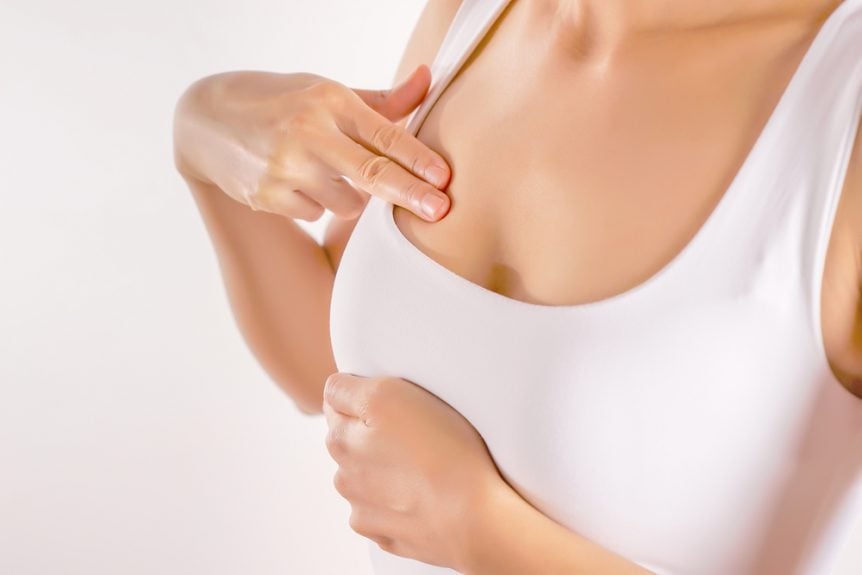The most reliable way to take care of your breasts is to regularly perform a self exam. Once each month is what most doctors recommend, as the statistics say 40 percent of breast cancers are discovered via the breast self exam. Plus, the more you get familiar with the size, shape, and feel of the tissues in your breasts, the easier it will be to detect if and when something feels off. When a woman does feel a lump that seems atypical, she should immediately consult with her doctor.
Where to do a breast self exam
A breast self exam should be done in three locations: standing up in the shower, standing in front of your bedroom mirror, and lying down on your bed. It’s a good idea to examine your breasts in each location to get the best representation of what’s going on with your breasts from one month to the next.
How to do a breast self exam
While relaxing in the shower, hold your left arm up and behind your head, while using your right hand to move the pads of your fingers in a circular motion around your left breast. Move from the outer areas of the breast and work inward, then switch sides. Pay attention to what you feel. You’re looking for any changes that might include thickening of lumps, or even a hard knot.
Next, dry off from your shower and stand in front of your bathroom mirror. This time you’ll want to take a look at both breasts with your arms down by your sides. Now, raise both arms above your head and see if you can detect any changes in size or shape. This could appear in the form of swelling, changes in your nipples, or even dimpling of the skin of your breasts. If you’re in the premenstrual part of your cycle, your nipples might be swollen or red. If this is normal for you and your cycle, there’s no need to worry. Next, place your hands on your hips while flexing your breasts. Again look for changes such as dimpling or puckering on one side.
Last, you’ll want to lie down on your bed. Placing a pillow beneath your right shoulder, and raise your right arm overhead. With your left hand, examine the right breast just as you did while you were standing in the shower. Then squeeze the nipple to see if there’s any discharge. Do the exact same thing on the other side.
What to do if you detect a change during a breast self exam
If and when you find an abnormality in breast tissue — a new lump, for example — there’s no need to panic. Your breast tissues change throughout the month as your hormones change, and the majority of time — 8 times out of 10, to be exact — a lump isn’t cancerous. You might also have fibrocystic breast disease, which is common and characterized by nodular breast tissues. So, have fun getting to know your breasts. Your health depends on it!
Mammography is an invaluable early detection tool for breast cancer. At OB/GYN Associates of Alabama, we recommend a baseline mammogram for women ages 35 to 39, and an annual mammogram for women over 40. Contact us to schedule an appointment!



